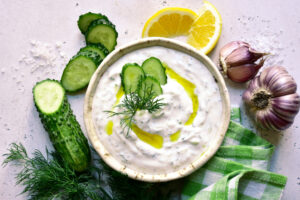Ensuring your furry friend enjoys a nutritious and balanced diet is essential for their health and happiness. One popular choice for many dog owners is homemade dog food, which allows for complete control over the ingredients and ensures the freshness of meals. Here, we provide a ground beef dog food recipe that is not only delicious but also packed with the nutrients your canine companion needs.
Ingredients:
1.5 pounds of ground beef (preferably lean)
1 cup of brown rice
1 tablespoon of fish oil
3 cups of chopped baby spinach
2 carrots, shredded
1 zucchini, shredded
1/2 cup of peas (either frozen or canned)
Nutritional Supplements (optional, consult your vet):
Calcium supplement
Vitamin E supplement
Instructions:
Cook the Rice:
Begin by cooking the brown rice according to the package instructions. Brown rice is a great source of complex carbohydrates and will provide your dog with the energy they need.
Brown the Ground Beef:
In a large skillet, cook the ground beef over medium heat until it’s browned. Make sure to break it up into small pieces as it cooks to ensure even cooking. Once done, drain any excess fat to keep the meal healthy.
Steam Vegetables:
While the beef cooks, steam the carrots, zucchini, and peas until they are tender. This can be done in a steaming basket over boiling water or in the microwave. Steaming preserves most of the nutrients in the vegetables.
Combine Ingredients:
In a large mixing bowl, combine the cooked ground beef, rice, steamed vegetables, and raw spinach. The warmth from the cooked ingredients will help wilt the spinach, making it easier for your dog to digest.
Add Supplements and Oils:
Mix in the fish oil, which is an excellent source of omega-3 fatty acids that help keep your dog’s coat shiny and skin healthy. If you choose to add any nutritional supplements like calcium or vitamin E, now is the time to do it. Always consult with your veterinarian before adding any supplements to ensure they are necessary and given in the correct dosage.
Cool and Serve:
Allow the mixture to cool down to room temperature before serving it to your dog. The size of the serving will depend on your dog’s size, age, and activity level. Consult your vet for guidance on portion sizes.
Storage:
Any leftover food can be stored in the refrigerator for up to five days. You can also freeze portions in freezer-safe containers or bags for up to three months.
Tips for Feeding Your Dog Homemade Food:
Consult Your Vet:
Before starting your dog on a homemade diet, it’s crucial to consult with a veterinarian. They can provide guidance on the nutritional needs of your dog based on their specific health, weight, and age.
Variety is Key:
Just like humans, dogs benefit from a varied diet to ensure they receive a range of nutrients.
Consider rotating the type of meat and vegetables you use, and occasionally introduce new grains like quinoa or barley.
Monitor Your Dog’s Health:
Keep an eye on your dog’s health and adjust their diet as needed. Changes in their coat, energy level, and weight can indicate whether their dietary needs are being met.
Homemade dog food, like this ground beef recipe, can be a wonderful way to enrich your dog’s diet with wholesome ingredients. By taking the time to prepare meals, you not only cater to their nutritional requirements but also add a loving touch to every bite.
Health Benefits of Homemade Dog Food
Making your dog’s food at home offers several health benefits that can contribute significantly to their overall well-being:
Avoid Preservatives and Additives:
Commercial dog foods often contain preservatives and additives that can be avoided with homemade meals. These substances can sometimes cause or exacerbate health issues, such as allergies or digestive problems.
Tailored Nutrition:
Homemade dog food allows you to tailor your dog’s diet to their specific needs. For instance, if your dog is overweight, you can adjust the recipe to be lower in calories and fat. Similarly, for dogs with sensitivities, you can omit ingredients that trigger their allergies.
Freshness:
Cooking meals for your dog ensures that they are eating fresh food without the processed ingredients found in many commercial foods. Fresh foods can be more digestible and retain more natural nutrients.
Transitioning to Homemade Dog Food
Switching your dog’s diet from commercial to homemade food should be a gradual process:
Start Small:
Begin by mixing a small amount of the homemade meal with their current dog food. Gradually increase the homemade portion over several days while decreasing the commercial food.
Monitor Digestion:
Keep an eye on your dog’s digestion during the transition. Signs of digestive discomfort may include diarrhea, constipation, or excessive gas. If these occur, slow the transition and consult your veterinarian.
Adjust Based on Feedback:
Pay attention to how your dog reacts to their new diet both in terms of their energy levels and their enjoyment of the food. Some dogs might be picky at first, but patience and slight adjustments can help.
DIY Nutritional Considerations
While homemade dog food has many benefits, it’s crucial to understand that dogs have different nutritional requirements from humans:
Protein:
Dogs need good-quality protein which is critical for their muscle structure and energy levels. Ground beef is a good source, but it’s important to vary the protein sources to include chicken, turkey, or fish.
Carbohydrates:
While dogs don’t necessarily need high levels of carbohydrates, incorporating them can provide beneficial energy and fiber. Brown rice, as used in this recipe, is an excellent source, but it’s good to include other grains and even some legumes for variety.
Fats:
Healthy fats are vital for your dog’s energy and cell integrity. Fish oil is a good source of fat, but flaxseed oil or coconut oil can also be beneficial.
Vitamins and Minerals:
Ensure your dog’s diet is complete with necessary vitamins and minerals. Carrots and spinach are great for providing these, but a vet-approved supplement might still be necessary to meet all nutritional needs.
Creating your dog’s food can be a rewarding experience, allowing you to bond over meal preparation while ensuring they receive a balanced diet tailored to their specific needs.
Remember to consult with your veterinarian to make sure your homemade meals meet your dog’s dietary requirements. With careful planning and a little love, your dog can enjoy delicious, nutritious meals that are just as good, if not better, than what can be bought in a store.




